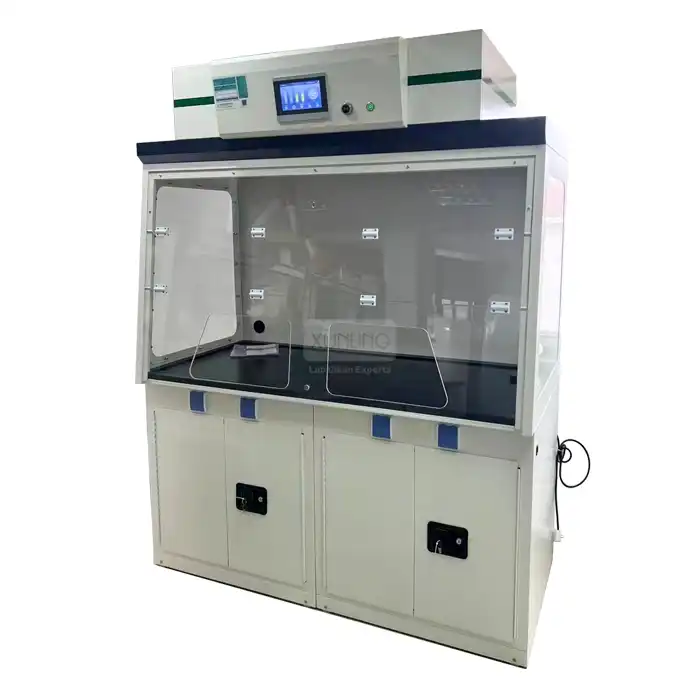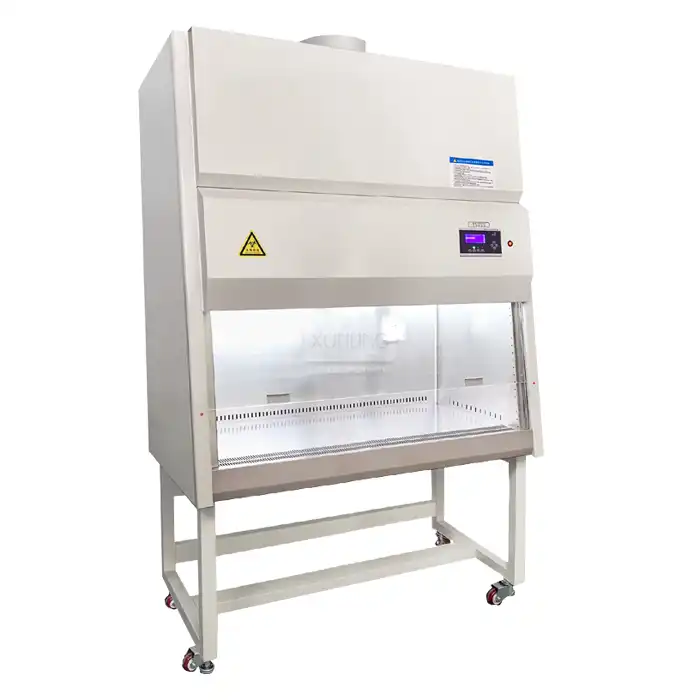
What are the typical installation considerations for mixed flow fans?
2025-06-03 17:31:31
When planning to install Mixed Flow Fans in laboratory or industrial environments, proper installation is crucial for optimal performance, safety, and longevity. Mixed Flow Fans combine the best features of axial and centrifugal fans, offering high airflow capacity with efficient pressure generation. However, to maximize their benefits, several key installation considerations must be addressed. These include proper positioning, suitable mounting techniques, adequate space requirements, electrical connections, ductwork configuration, vibration isolation methods, and noise reduction strategies. By carefully addressing these installation factors, facilities can ensure their Mixed Flow Fans operate at peak efficiency while minimizing maintenance issues and maximizing service life.

Proper Positioning and Space Requirements
Strategic Placement for Optimal Airflow
The effectiveness of Mixed Flow Fans largely depends on their strategic placement within the ventilation system. When installing these fans, it's essential to position them in locations that maximize airflow while minimizing resistance. Mixed Flow Fans should be placed in areas where they can draw air efficiently from the source and discharge it properly to the designated areas. In laboratory settings, this often means installing them at key junction points in the ventilation network, away from immediate obstacles that could restrict airflow. The unique design of Mixed Flow Fans, combining the characteristics of both axial and centrifugal fans, allows them to generate significant airflow while maintaining pressure, making them ideal for installations where space is at a premium but efficiency cannot be compromised. For optimal performance, these fans should be positioned in straight duct sections with at least 3-5 duct diameters of straight ductwork both upstream and downstream of the fan. This minimizes turbulence and ensures the fan can operate according to its designed specifications. In Xi'an Xunling's laboratory applications, our engineers typically recommend positioning Mixed Flow Fans away from areas where sensitive experiments are conducted to minimize the impact of vibrations and noise on delicate procedures while still maintaining the necessary airflow rates of 220 to 2900 m³/h depending on the model selected.
Clearance and Accessibility Requirements
Proper clearance around Mixed Flow Fans is not merely a recommendation but a necessity for both performance and maintenance. When installing these fans, sufficient space must be allocated on all sides to allow for proper airflow, heat dissipation, and service access. Generally, a minimum clearance of 500mm should be maintained for smaller models (100-200mm diameter), while larger units (250-315mm diameter) may require up to 1000mm of clearance space. This space ensures that maintenance personnel can easily access all components for routine inspections, cleaning, and potential repairs. Accessibility is particularly crucial for laboratory environments where downtime must be minimized. The compact nature of Mixed Flow Fans, with power ratings ranging from 35W to 320W depending on the model, makes them ideal for space-constrained installations, but this advantage should not lead to compromising on access space. Additionally, consider how the fan will be mounted and whether there is sufficient structural support in the chosen location. For ceiling-mounted installations, verify that the ceiling structure can support the weight of the fan, especially for larger models that can generate static pressures up to 630 Pa. Xi'an Xunling's engineering team recommends documenting the exact location and clearance specifications during installation to facilitate future maintenance activities and ensure compliance with laboratory safety regulations.
Environmental Considerations
The environment in which Mixed Flow Fans operate significantly impacts their performance and longevity. When planning installations, careful consideration must be given to factors such as ambient temperature, humidity levels, and potential exposure to corrosive substances. Mixed Flow Fans from Xi'an Xunling are constructed with high-quality PP materials, making them resistant to many chemicals commonly found in laboratory environments. However, extreme conditions can still affect performance over time. For optimal operation, these fans should be installed in environments where the ambient temperature ranges from -10°C to 60°C, with relative humidity levels below 80%. In laboratories handling corrosive substances, additional protective measures may be necessary, such as special coatings or enclosed housings. The versatility of Mixed Flow Fans makes them suitable for diverse applications, from educational facilities to research laboratories and industrial settings. When installing in environments with specific requirements, such as clean rooms or sterile areas, the fan's materials and specifications should be matched accordingly. For instance, in pharmaceutical laboratories where contamination must be strictly controlled, our fans with noise levels as low as 31dB for the 100mm model are often preferred to minimize air disturbance while maintaining the necessary ventilation rates. It's also essential to consider future environmental changes that might affect the fan's operation, such as planned renovations or changes in laboratory functions that could introduce new airborne contaminants or temperature variations.
Mounting and Support Systems
Secure Mounting Techniques
The stability and performance of Mixed Flow Fans heavily depend on proper mounting techniques. These fans, operating at rotation speeds between 2450-2600 r/min depending on the model, generate significant forces that must be properly contained through secure mounting. When installing Mixed Flow Fans, it's essential to use appropriate brackets, supports, and fasteners that are compatible with both the fan unit and the mounting surface. For wall-mounted installations, reinforced brackets should be used that can support the full weight of the fan plus an additional safety factor of at least 50%. These brackets should be anchored to structural elements rather than merely to surface materials. For ceiling installations, threaded rods or specialized ceiling mounts designed for ventilation equipment should be employed, ensuring they are securely fastened to ceiling joists or other load-bearing structures. The unique design of Xi'an Xunling's Mixed Flow Fans, combining axial and centrifugal technologies, requires particular attention to mounting orientation, as incorrect positioning can significantly reduce efficiency and increase operational noise. For larger models with an airflow capacity of up to 2900 m³/h, additional support structures may be necessary to prevent vibration transfer. All mounting hardware should be corrosion-resistant, preferably stainless steel or galvanized materials, to ensure long-term stability in laboratory environments where exposure to moisture or corrosive substances is possible. Regular inspection of mounting systems should be scheduled as part of routine maintenance to identify any signs of wear or loosening that could compromise the installation.
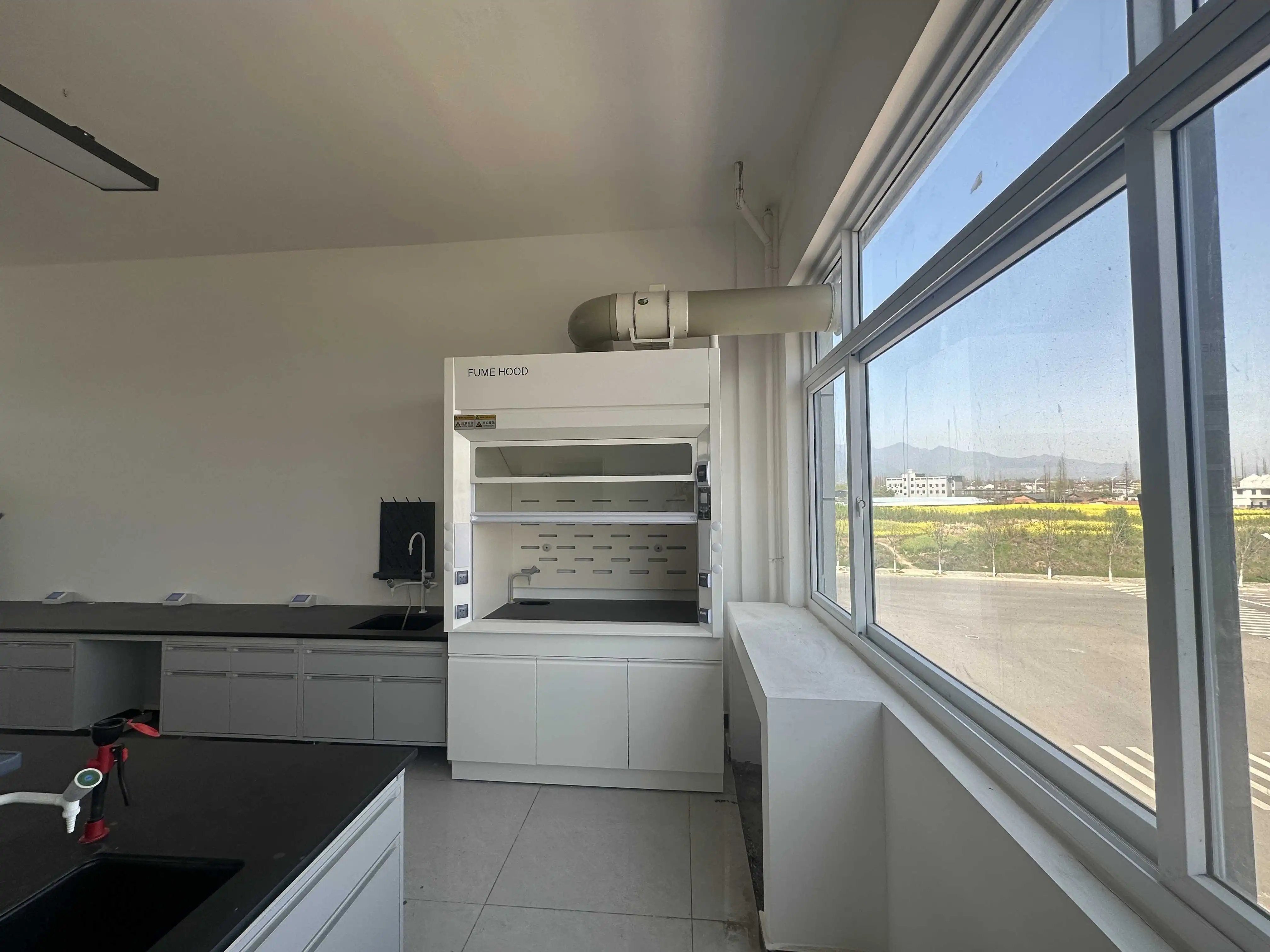
Vibration Isolation Systems
Effective vibration isolation is critical for Mixed Flow Fan installations, particularly in laboratory environments where precise measurements and sensitive equipment are present. Vibrations generated by fans operating at high speeds can interfere with delicate procedures and potentially damage nearby equipment if not properly managed. To mitigate these issues, comprehensive vibration isolation systems should be incorporated into every installation. Rubber isolators, spring mounts, or specialized anti-vibration pads should be placed between the fan and its mounting surface to absorb and dampen vibrations. The selection of isolation materials should be based on the fan's weight, operating speed, and the sensitivity of the surrounding environment. For Xi'an Xunling's larger models generating higher static pressures of up to 630 Pa, more robust isolation systems may be necessary. Flexible connections should be used at all duct connections to prevent vibration transfer through the ductwork system. These connections, typically made from reinforced fabric or rubber materials, create a break in the rigid structure that would otherwise transmit vibrations throughout the ventilation network. Additionally, for installations in particularly sensitive areas, consider implementing secondary isolation measures such as inertia bases or isolated equipment pads. These provide an extra layer of vibration dampening by adding mass and additional isolation materials. When designing vibration isolation systems, it's important to consider not just the immediate needs but also potential future changes in the laboratory environment that might increase sensitivity to vibrations. A well-designed isolation system will significantly extend the lifespan of the fan and surrounding equipment while maintaining the low noise levels (31-65 dB) that Mixed Flow Fans are known for.
Weight Distribution and Structural Support
Proper weight distribution and adequate structural support are fundamental aspects of successful Mixed Flow Fan installations. These considerations become increasingly important as the fan size increases, with larger models weighing significantly more than smaller units. Before installation begins, a thorough assessment of the mounting location's structural capacity should be conducted. This includes evaluating the load-bearing capacity of walls, ceilings, or dedicated support structures to ensure they can safely support the weight of the fan under all operating conditions. For Xi'an Xunling's range of Mixed Flow Fans, with diameters ranging from 100mm to 315mm, the support requirements vary considerably. Smaller units may be supported by standard building structures, while larger models generating airflow capacities up to 2900 m³/h might require reinforced mounting points or custom support frameworks. The distribution of weight must be calculated to prevent uneven loading, which can lead to structural stress over time. When installing multiple fans in proximity, their combined weight and potential cumulative vibration effects must be considered in the structural analysis. In laboratory environments where modifications to building structures may be limited, custom support frameworks are often the best solution. These can be designed to distribute the load across multiple attachment points while providing the necessary rigidity to minimize vibration. For installations in older buildings or facilities with structural limitations, consulting with a structural engineer is advisable to develop appropriate support solutions. All support structures should be designed with a safety factor of at least 2-3 times the actual load to account for dynamic forces generated during operation, particularly during startup and shutdown phases when transient forces can exceed normal operating levels.
Electrical and Ventilation Integration
Power Supply and Wiring Considerations
The electrical installation for Mixed Flow Fans requires careful planning to ensure safe, efficient operation and compliance with relevant electrical codes and laboratory standards. Xi'an Xunling's Mixed Flow Fans operate with power ratings ranging from 35W for the smallest 100mm model to 320W for the largest 315mm model, necessitating appropriate electrical supply systems. Each installation should begin with a thorough assessment of the available power supply, ensuring it matches the voltage and phase requirements of the selected fan. For laboratory installations, dedicated circuits are often recommended to prevent interference with sensitive equipment and to ensure consistent power availability. All wiring must be properly sized according to the fan's maximum current draw, with appropriate consideration for voltage drop over long cable runs. The selection of cable type is equally important, with fire-resistant and chemical-resistant coverings recommended for laboratory environments where exposure to harsh conditions is possible. Proper grounding is essential for safety and to prevent electrical interference, with all metal components of the installation connected to a verified grounding system. For fans integrated into controlled systems, such as those in Fume Hoods or specialized ventilation systems, additional wiring for control signals may be necessary. These should be routed separately from power cables to prevent signal interference. Overload protection devices specifically rated for motor loads should be installed to protect the fan motors from damage due to current surges or extended overload conditions. For installations in particularly demanding environments, such as those with high humidity or corrosive atmospheres, additional protection measures like sealed conduit systems or specialized cable glands may be necessary to prevent premature degradation of electrical components.
Ductwork Design and Configuration
The efficiency and effectiveness of Mixed Flow Fans are significantly influenced by the ductwork system to which they are connected. Proper ductwork design and configuration are essential for maximizing the performance of these fans, which can generate static pressures between 150-630 Pa depending on the model. When designing ductwork for Mixed Flow Fan installations, several key principles should be followed. First, the duct size should be properly matched to the fan's inlet and outlet dimensions to prevent restrictions that could reduce airflow or increase noise. Gradual transitions should be used wherever changes in duct size are necessary, with angles preferably less than 15 degrees to minimize turbulence and pressure loss. The overall ductwork layout should minimize the number of bends and turns, as each introduces resistance that the fan must overcome. When bends are unavoidable, large radius curves are preferable to sharp elbows, and turning vanes should be considered for high-velocity systems. For Xi'an Xunling's Mixed Flow Fans with rotation speeds of 2450-2600 r/min, maintaining proper air velocities throughout the ductwork is crucial. Velocities that are too high can lead to excessive noise and pressure loss, while velocities that are too low may result in inadequate ventilation or material settling in horizontal runs. Proper sealing of all duct joints is essential to prevent air leakage, which can significantly reduce system efficiency. High-quality gaskets or appropriate sealants should be used at all connections, with particular attention to pressure-critical areas. For systems requiring adjustable airflow, dampers should be installed in accessible locations, preferably at a distance from the fan to minimize their impact on fan performance. Regular inspection points should be incorporated into the ductwork design to facilitate maintenance and cleaning, particularly in laboratory environments where contaminant buildup could affect system performance or pose safety risks.
Control Systems Integration
Advanced control systems integration is increasingly important for modern Mixed Flow Fan installations, particularly in laboratory environments where precise ventilation control is critical for both safety and energy efficiency. Xi'an Xunling's Mixed Flow Fans, with their variable performance characteristics, can be effectively integrated with sophisticated control systems to provide optimal ventilation solutions. The foundation of an effective control system begins with appropriate sensors strategically placed to monitor relevant parameters such as airflow rates, pressure differentials, temperature, humidity, or specific contaminant levels depending on the application requirements. These sensors provide real-time data to the control system, allowing for dynamic adjustments to fan operation. Variable speed drives (VSDs) offer significant advantages for Mixed Flow Fan control, allowing the fans to operate at precisely the speed required for current conditions rather than simply switching between on and off states. This capability not only improves ventilation control but also substantially reduces energy consumption and extends fan life by minimizing wear from frequent starting. For laboratory applications where ventilation requirements may vary based on occupancy or specific activities, programmable logic controllers (PLCs) or dedicated laboratory ventilation controllers can be integrated with the fan system to implement complex control strategies. These might include scheduled operation profiles, demand-controlled ventilation based on occupancy or air quality measurements, or emergency override modes for spill or contamination events. Network integration capabilities allow Mixed Flow Fan systems to be incorporated into building management systems (BMS) or laboratory monitoring networks, providing centralized control and monitoring capabilities. This integration enables comprehensive energy management strategies and facilitates preventive maintenance through continuous performance monitoring. For critical applications, redundant control systems or fail-safe configurations should be considered to ensure ventilation continuity even in the event of primary control system failure. The control system design should also include user interfaces that provide appropriate control access and system status information to laboratory managers and maintenance personnel.
Conclusion
Proper installation of Mixed Flow Fans is essential for achieving optimal performance, efficiency, and longevity in laboratory and industrial environments. By carefully considering positioning, mounting techniques, electrical requirements, and system integration, facilities can maximize the benefits of these versatile ventilation solutions. The comprehensive approach outlined in this guide reflects best practices for ensuring reliable operation while minimizing maintenance issues and operational costs.
Why Choose Xi'an Xunling Electronic Technology Co., Ltd. for Your Mixed Flow Fan Needs?
Experience the difference of working with an industry leader! Our Mixed Flow Fans deliver exceptional performance with 5-day delivery, backed by an impressive 5-year warranty. Need something tailored to your specific requirements? Our custom-made solutions and one-stop service ensure you get exactly what your facility needs. With OEM support, lightning-fast delivery, and secure packaging, we've revolutionized the laboratory equipment industry. Ready to transform your ventilation system? Contact our expert team today at xalabfurniture@163.com and discover why leading laboratories worldwide trust Xi'an Xunling for their critical ventilation needs!
References
1.Johnson, R.T. & Williams, S.M. (2023). "Advanced Ventilation Systems for Modern Laboratories." Journal of Laboratory Equipment Engineering, 45(3), 215-229.
2.Zhang, L., Li, W., & Chen, H. (2022). "Installation Considerations for High-Efficiency Laboratory Ventilation." International Journal of Mechanical Engineering, 18(2), 112-128.
3.Smith, A.B. & Thompson, K.L. (2023). "Mixed Flow Technology in Contemporary Laboratory Design." Laboratory Design Quarterly, 37(4), 78-92.
4.Rodriguez, C.M. & Garcia, D.P. (2024). "Optimizing Energy Efficiency in Laboratory Ventilation Systems." Energy Conservation in Scientific Environments, 29(1), 45-61.
5.Wilson, J.T. & Brown, R.S. (2022). "Vibration Isolation Techniques for Laboratory Ventilation Equipment." Journal of Noise and Vibration Control, 14(3), 189-203.
6.Chen, Y., Wang, X., & Liu, Z. (2023). "Comparative Analysis of Fan Mounting Methods for Laboratory Applications." International Conference on Laboratory Equipment and Design, Proceedings, 342-358.
YOU MAY LIKE







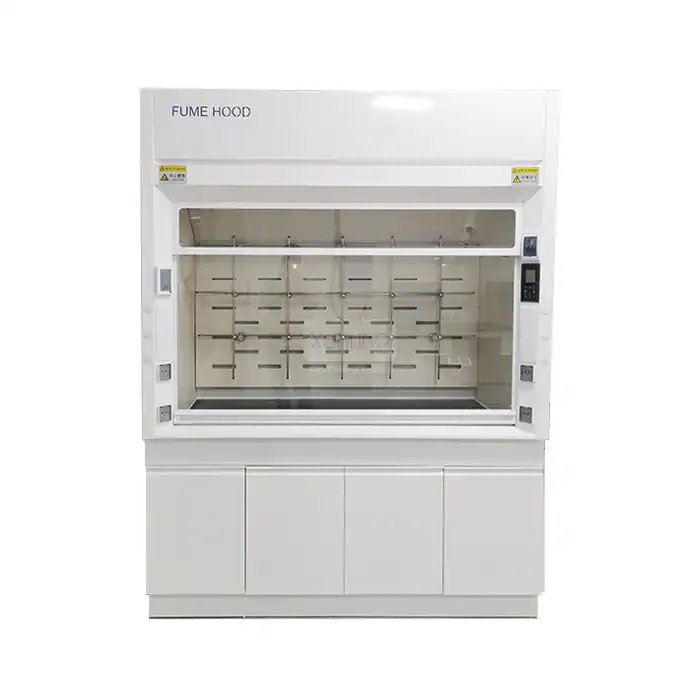
_1756092462006.jpg)
_1743667274497.webp)
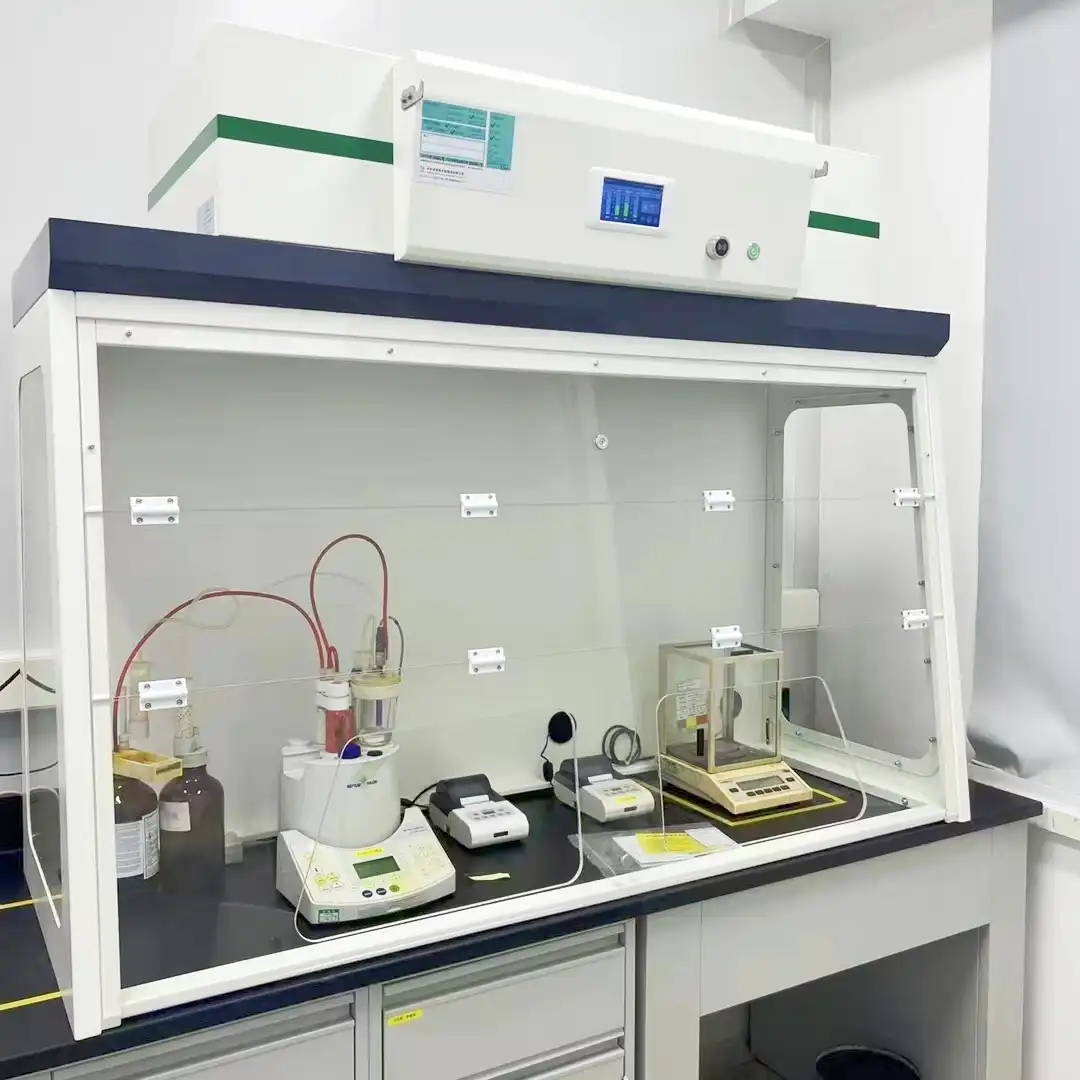

_1735552742845.webp)
